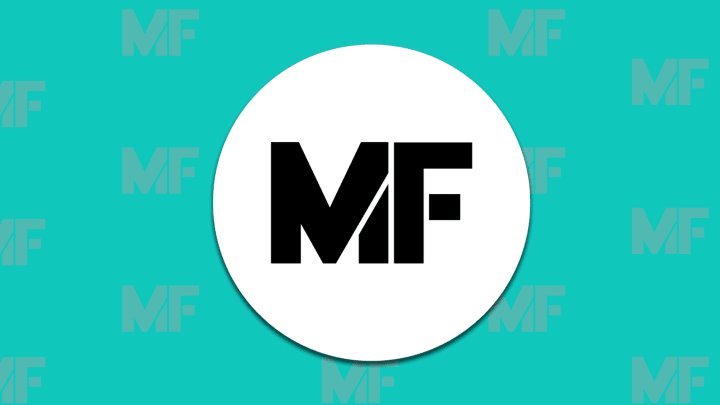Zooey Deschanel plays one. So do William H. Macy and Mr. Schuester on Glee. Pearl Jam singer Eddie Vedder accompanies himself exclusively on one for his latest album, Ukulele Songs. Meanwhile, every third TV commercial seems to feature a soundtrack of a strumming ukulele.
What's going on? Why is such an old-fashioned instrument once associated with Hawaii and boater-wearing dandies of the early 20th century popular again? Is it a kind of retro revolution? A bit of woody quaintness to counter all the smooth glassy tech of the future-world we live in? For the answer, let's look back at a little history.
"A Yellow Ukulele" illustration by Flickr user Jem Yoshioka (jemshed)
The Jumping Flea
In 1879, a ship full of Portuguese travelers arrived in Hawaii's Honolulu Harbor. Legend has it that one passenger was so happy to be ashore that he began singing Portuguese folk songs of thanksgiving. He accompanied himself on a small-bodied, four-stringed instrument called the braguinha. The islanders were enchanted by it. Soon, one of the Portuguese settlers had opened his own shop in Hawaii, making braguinhas.
Around this time, an English army officer named Edward Purvis was appointed assistant chamberlain in the court of Hawaii's King David Kalakaua. Purvis was a fine musician and became very adept on the braguinha, which he used to entertain members of the court. A small, energetic man, Purvis got the nickname of "ukulele," a Hawaiian word that means "jumping flea." Soon the nickname spread to the instrument he liked to play.
Another story says that the name ukulele came from the leaping motion of a player's fingers on the small neck of the instrument. Whatever the case, with the enthusiasm of Hawaii's royal family pointing the way, the ukulele [the correct Hawaiian pronunciation is "oo-koo-le-le"] was adopted as the islands' instrument of choice.
Hawaiian Punch

The first stateside ukulele craze began in 1915, at an event in San Francisco called the Panama-Pacific International Exposition. It was there that the relatively new U.S. territory of Hawaii got a chance to strut its stuff. At the Hawaiian pavilion, the shows featured hula dancers and musicians strumming ukuleles. For the millions of Americans who laid eyes on this charming little instrument, it was love at first sight.
One song in particular, "On the Beach at Waikiki," captured the exotic allure of the islands and helped ignite a ukulele craze across the country. Soon, instrument companies were manufacturing them, department stores were selling them, and music stores were offering lessons. The songwriters in New York's Tin Pan Alley, always sniffing for a fad, responded with dozens of Hawaiian-themed, uke-centered novelty songs. "My Honolulu Ukulele Baby," "I Can Hear the Ukuleles Calling Me," and the excellently titled "Oh, How She Could Yacki Hacki Wicki Wacki Woo" were just a few hits of the day that further promoted the little stringed instrument as a symbol of romance and the carefree life.
By the 1920s, ukulele-playing superstars like Johnny Marvin and Cliff "Ukulele Ike" Edwards (later the voice of Jiminy Cricket's "When You Wish Upon a Star") were taking the instrument onto the Hit Parade and the silver screen.
Ukulele Ike performs "Nobody But You" in The Hollywood Revue of 1929
The TV Pal
The uke enjoyed a popular resurgence in the 1950s, thanks to the television program Arthur Godfrey and His Ukulele. The show ran four nights a week and featured the folksy entertainer singing songs and giving lessons over the air. Godfrey-endorsed instruction books and ukuleles sold millions. Made of plastic, the ukes were called TV Pals.
Arthur Godfrey performing "For You," 1953
In the decades after, the ukulele had its moments: Tiny Tim's novelty tune "Tiptoe Through the Tulips," B.J. Thomas's hit "Raindrops Keep Fallin' on My Head," and the charming Steve Martin and Bernadette Peters seaside duet in The Jerk. But by the 1980s, the uke was relegated to a musty comic prop.
Navin (Steve Martin) and Marie (Bernadette Peters) sing "Tonight You Belong To Me" in 1979's The Jerk.
Comeback Special
In the '90s, the ukulele began to stage a comeback. In 1995, the Beatles Anthology TV special featured George Harrison playing the uke. Then in 1999, a ukulele version of "Over the Rainbow" by Hawaiian musician Israel Kamakawiwo'ole was used in a commercial for eToys, and it ignited uke fever in the advertising world. That recording alone has been licensed more than a hundred times to sell everything from lottery tickets to house paint. Like a hundred years before, the sound of a strumming uke invoked romance and a carefree life. And for advertisers, it carries the implicit message, "Hey, we're good folks."
Today, there are hundreds of thousands of ukulele-related videos on YouTube, while contemporary pop performers from Magnetic Fields to Nelly McKay to Train feature it in their shows. At the top of the heap, there's Jake Shimabukuro, a virtuoso on the instrument who became an internet sensation with his cover of The Beatles' "While My Guitar Gently Weeps."
Shimabukuro performing "Ukulele Weeps"
One reason for the uke's mass appeal is its low price tag. Another is its portability. Most importantly, it's easy to learn. So easy, in fact, that it's almost impossible to play it badly. Out of tune, maybe, but that can even add to its charm.
Moreover, the uke has an ability to convey light-heartedness and lift spirits. I've been playing one for a few years, and I swear by it as a surefire cure for my own blahs and blues. Strum a few chords, and you feel better.
Finally, in an era of smartphones, iPads, and digitized entertainment, maybe the ukulele is simply a cheap, quick way to reconnect to our ever-vanishing past. A pint-sized totem that helps us hold on to our heart, humanity, and hot cha-ch-cha.
So do we have uke lovers out there in mental_floss land?
